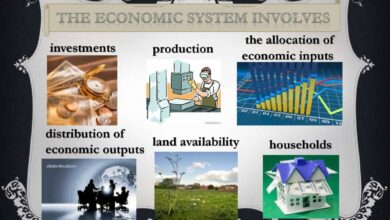
Foreign aid has long been hailed as a solution to poverty, hunger, and inequality in developing countries. Developed nations pour billions of dollars into aid programs every year, with the intention of uplifting those in need and creating a better world. However, as noble as this may seem, the reality is far from what we are led to believe. The bitter truth is that foreign aid is a double-edged sword – while it may provide temporary relief, it also brings with it a host of negative consequences that are often overlooked. In this blog post, we will delve into the dark side of foreign aid and uncover why it can be considered a sugar coated suicide pill.
Understanding the Concept of Foreign Aid
Foreign aid is a term that is often thrown around in discussions about global poverty and inequality, but what does it really mean? At its core, foreign aid refers to the transfer of resources from one country to another, typically from a developed country to a developing country. This aid can take many forms, such as financial grants, loans, technical expertise, or the provision of goods and services.
The concept of foreign aid is rooted in the belief that developed countries have a moral responsibility to assist those in need and promote global development. It is seen as a way to address pressing issues like poverty, hunger, and lack of access to healthcare and education. By providing assistance, it is hoped that developing countries can overcome these challenges and improve the lives of their citizens.
However, foreign aid is not without controversy. Critics argue that it perpetuates a cycle of dependency, as recipient countries become reliant on aid instead of developing their own economies. There is also concern about the lack of transparency and accountability in aid programs, as well as the potential for aid to be misused or wasted.
In the next sections of this blog post, we will explore both the promises and potential upsides of foreign aid, as well as the downsides and negative consequences that often go unnoticed. Through examining case studies and exploring alternative approaches, we can gain a deeper understanding of the complex nature of foreign aid and its impact on developing countries.

The Sugar-Coating: Promises and Potential Upsides of Foreign Aid
Foreign aid is often touted as a solution to the pressing issues faced by developing countries. Proponents argue that it can alleviate poverty, reduce inequality, and improve access to essential services like healthcare and education. The promises and potential upsides of foreign aid are indeed alluring.
One of the main promises of foreign aid is that it can provide immediate relief in times of crisis. Whether it’s in the aftermath of a natural disaster or during a health emergency, aid can offer a lifeline to those affected, providing food, water, shelter, and medical assistance. In these situations, foreign aid can undoubtedly save lives and offer hope to those in desperate need.
Additionally, foreign aid is often seen as a catalyst for development. By providing financial resources, technical expertise, and access to technology, developed countries aim to support the growth and transformation of developing nations. It is believed that with the right assistance, these countries can build the necessary infrastructure, develop industries, and improve the living conditions of their citizens.
Moreover, foreign aid is thought to foster international collaboration and goodwill. When developed nations reach out to assist developing countries, it can create a sense of solidarity and foster positive diplomatic relations. By helping each other, nations can build stronger ties and work towards a more harmonious global community.
While these promises and potential upsides of foreign aid are indeed appealing, it is crucial to critically examine their outcomes and question whether they truly outweigh the negative consequences. In the next section, we will peel back the layers and unveil the dark side of foreign aid, uncovering the bitter truth behind this seemingly altruistic endeavor.

The Poison Pill: Unveiling the Downside of Foreign Aid
While foreign aid may seem like a noble endeavor, it is important to take a critical look at the downside of this seemingly altruistic solution. One of the major criticisms of foreign aid is that it perpetuates a cycle of dependency. When developing countries become reliant on aid from developed nations, they often fail to develop their own economies and find themselves trapped in a cycle of perpetual need. This dependency on aid prevents them from building sustainable economic systems that can uplift their citizens out of poverty.
Another downside of foreign aid is the lack of transparency and accountability in aid programs. Oftentimes, it is difficult to track how the aid money is being spent, and there have been cases of corruption and mismanagement. This raises concerns about the effectiveness of foreign aid and whether it is truly reaching the intended recipients.
Additionally, foreign aid can have unintended negative consequences on local economies. For example, the influx of free goods from aid programs can undermine local industries and small businesses, leading to unemployment and further economic instability. This is known as the “Dutch disease” phenomenon, where the dependence on aid leads to the neglect of other economic sectors.
Furthermore, there is a danger of aid reinforcing existing power imbalances and inequalities. Aid programs are often designed and implemented by developed nations, who may not fully understand the cultural, social, and political contexts of the recipient countries. This can lead to a top-down approach that ignores the needs and aspirations of the local population, perpetuating inequalities rather than addressing them.
Overall, the downside of foreign aid cannot be ignored. While it may provide temporary relief, it often fails to address the root causes of poverty and inequality, and can even exacerbate these issues in the long run. It is essential to critically examine the impact of foreign aid and explore alternative approaches that prioritize sustainable development and empower local communities.

Case Studies: Examining the Impacts of Foreign Aid
To truly understand the impact of foreign aid, it is important to examine real-life case studies. These examples shed light on both the successes and failures of foreign aid and offer valuable insights into its effectiveness.
One case study worth exploring is the aid provided to Haiti after the devastating earthquake in 2010. In the immediate aftermath, billions of dollars poured into the country, with the intention of rebuilding infrastructure and improving living conditions. However, years later, Haiti still faces significant challenges. The aid money was largely mismanaged, leading to little improvement in the lives of the Haitian people. This case study highlights the importance of transparency and accountability in aid programs, and the need for effective oversight to ensure that the aid reaches its intended recipients.
Another case study is the aid provided to sub-Saharan Africa over the years. Despite receiving substantial amounts of aid, many countries in the region continue to face high levels of poverty, inequality, and underdevelopment. This raises questions about the long-term impact of foreign aid and whether it is truly addressing the root causes of these issues. It also underscores the need to explore alternative approaches to development that prioritize sustainable solutions.
Examining these case studies allows us to take a critical look at the impact of foreign aid and question its effectiveness. While some aid programs have had positive outcomes, others have failed to bring about significant change. By learning from both successes and failures, we can begin to develop more informed and nuanced approaches to addressing global challenges.

Alternatives to Foreign Aid
In the previous sections, we explored the complexities and consequences of foreign aid. While it is clear that foreign aid has its drawbacks, it is also essential to discuss alternatives that prioritize sustainable development and empower local communities. Here are some alternative approaches to consider:

- 1. Investment in education and capacity-building: Instead of relying solely on aid, developed nations can invest in education and skill development programs in developing countries. By empowering individuals with knowledge and skills, we can create a foundation for long-term economic growth and self-sufficiency.
- 2. Fair trade and economic partnerships: Promoting fair trade practices and establishing economic partnerships that benefit both developed and developing nations can be a viable alternative to aid. This approach encourages self-reliance and sustainable economic development, while also fostering mutually beneficial relationships.
- Supporting local initiatives and organizations: Instead of implementing top-down aid programs, developed countries can focus on supporting local initiatives and organizations that have a deep understanding of the needs and aspirations of the community. By empowering these organizations, we can ensure that aid is targeted and effectively utilized.
- 4. Debt relief and cancellation: Developing countries often struggle with high levels of debt, which limits their ability to invest in their own development. By providing debt relief and cancellation, developed nations can alleviate the burden and enable these countries to allocate more resources towards sustainable development projects.
It is important to recognize that these alternative approaches require long-term commitment, collaboration, and a shift in mindset. By focusing on sustainable solutions and empowering local communities, we can move away from the cycle of dependency and work towards a more equitable and prosperous world.






Good
Thanks
When I originally commented I clicked the “Notify me when new comments are added” checkbox and now each time a comment is added I get several e-mails with the same comment. Is there any way you can remove me from that service? Thanks!
I love the efforts you have put in this, appreciate it for all the great articles.
Can I just say what a aid to find someone who truly is aware of what theyre speaking about on the internet. You positively know how one can deliver a problem to light and make it important. More individuals must read this and perceive this facet of the story. I cant consider youre not more standard because you positively have the gift.
Tonic Greens: An Overview. Introducing Tonic Greens, an innovative immune support supplement
I have to show appreciation to this writer for bailing me out of this type of situation. As a result of checking through the search engines and finding tips which were not pleasant, I figured my entire life was gone. Existing devoid of the solutions to the difficulties you’ve solved by means of the guideline is a serious case, and those that could have in a wrong way affected my entire career if I hadn’t come across the blog. Your good know-how and kindness in controlling a lot of things was very helpful. I’m not sure what I would have done if I hadn’t come upon such a solution like this. It’s possible to at this time look forward to my future. Thanks for your time very much for your professional and effective help. I will not be reluctant to endorse the sites to anyone who requires tips about this subject matter.
You really make it seem so easy with your presentation but I find this matter to be actually something that I think I would never understand. It seems too complex and extremely broad for me. I am looking forward for your next post, I will try to get the hang of it!
What Is Sugar Defender Supplement? Sugar Defender is a plant-based supplement and it helps to regulate the blood sugar levels in the body.
I intended to write you this tiny note so as to thank you so much again for all the pleasing suggestions you have provided on this page. It’s surprisingly open-handed of people like you to allow unhampered exactly what many individuals could possibly have offered for sale for an ebook in making some cash for themselves, most notably now that you could possibly have done it in case you wanted. The thoughts as well served as the great way to fully grasp other people have a similar desire the same as my personal own to see very much more in respect of this problem. I’m sure there are a lot more pleasant situations in the future for folks who read your blog post.
Thanks for one’s marvelous posting! I really enjoyed reading it, you might be a great author.I will always bookmark your blog and will eventually come back from now on. I want to encourage yourself to continue your great writing, have a nice morning!
I think other site proprietors should take this website as an model, very clean and great user genial style and design, let alone the content. You are an expert in this topic!
Hello, you used to write magnificent, but the last few posts have been kinda boring… I miss your great writings. Past several posts are just a little out of track! come on!
I will right away clutch your rss feed as I can not in finding your e-mail subscription hyperlink or newsletter service. Do you’ve any? Kindly allow me know so that I may subscribe. Thanks.
Good web site! I really love how it is easy on my eyes and the data are well written. I’m wondering how I could be notified whenever a new post has been made. I have subscribed to your RSS which must do the trick! Have a great day!
I would like to voice my appreciation for your kind-heartedness supporting people who have the need for help on in this theme. Your real dedication to passing the solution all around was surprisingly beneficial and has frequently helped employees just like me to attain their aims. Your new interesting information can mean a lot to me and a whole lot more to my mates. Thanks a lot; from each one of us.